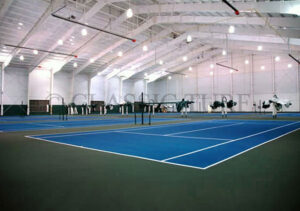 Athletic complexes today are competing with many other athletic complexes for business. Athletes know which ones are modern and up-to-date versus which ones are old and outdated—and they talk with each other, always comparing venues.
Athletic complexes today are competing with many other athletic complexes for business. Athletes know which ones are modern and up-to-date versus which ones are old and outdated—and they talk with each other, always comparing venues.
If you own or run an athletic complex, you know that competition is fierce, and athletes flock to the best complexes while avoiding the ones that don’t seem to continually invest in their facilities and keep them clean, attractive, safe and structurally sound.
Back in the 1930s, “post-tension concrete” came into being when smart builders decided to encase sheathed cables in concrete. After stressing and locking the cables in compression, the concrete became super strong.
In the 1980s, tennis courts, tracks and outdoor basketball courts started being constructed using post-tension concrete. Instead of the tracks and courts of old, which would easily heave, settle and crack, the post-tension concrete versions set the new standard in the industry.
Thirty years later—today—post-tension concrete structures have proven to have great staying power. In other words, because of the solid construction principles involved in their creation, these tracks and courts have excellent longevity.
Athletic complexes don’t want to be re-surfacing or replacing their tracks and courts every few years, right? So, it makes sense to invest in things such as post-tension concrete tennis courts, which the Classic Turf company of Connecticut installs all over the world. Classic Turf includes a 20-year guarantee, which means your athletic complex can get at least two decades of worry-free use out of the company’s superior post-tension concrete tracks and courts. Call Classic Turf today at 1-800-246-7951 to learn more about options, benefits and pricing.ccc
